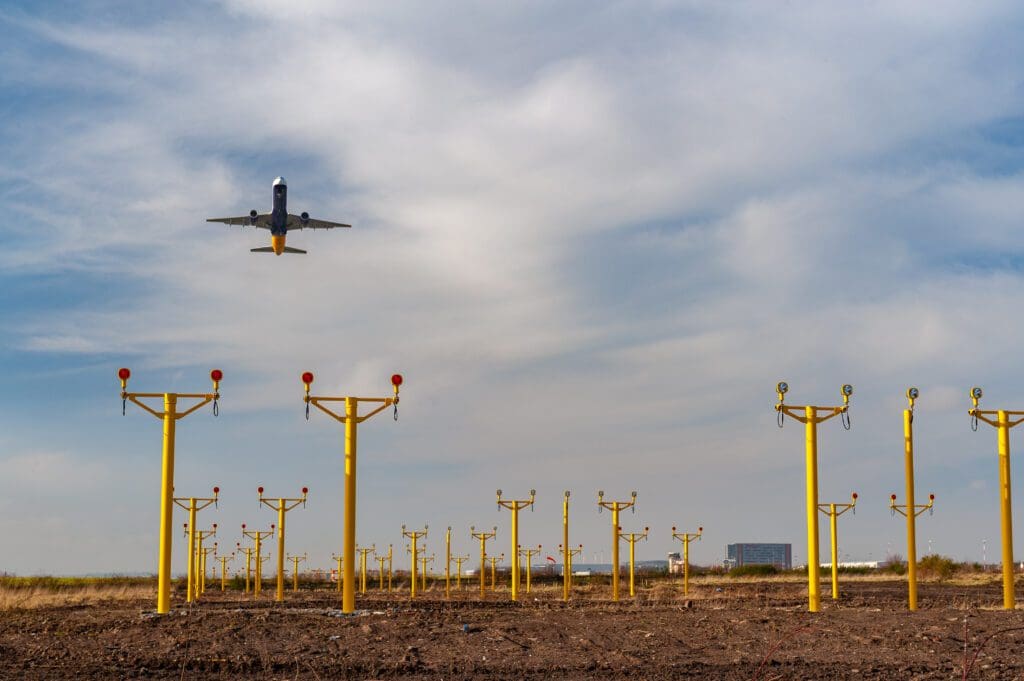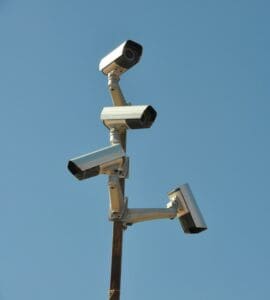A monopole is a type of structural support that consists of a single, self-supporting vertical pole or tower. They’re commonly used in applications such as telecommunications, lighting, utility infrastructure and wind turbines. They are often constructed from materials such as steel or fibreglass (fiberglass). Structures with a monopole design can vary in height, depending on the application and requirements. They are designed to withstand high winds, and support the equipment or structures mounted on them. Monopoles are known for their space efficiency, aesthetic appeal, and ease of installation, making them a versatile choice in various industries.

A monopole design has several advantages in various engineering and architectural applications. Some of the key benefits of a monopole design include:
Space efficiency and environmental impact
As monopole structures are vertically oriented they take up less horizontal space compared to traditional support structures like lattice towers. This space efficiency is particularly valuable in densely populated urban areas where land is at a premium. As they typically have a smaller footprint, they therefore have less impact on the environment. They are less likely to disrupt local ecosystems, and their construction often requires fewer resources and less land disturbance. They are also often easier and quicker to install compared to traditional masts. This can result in cost savings in terms of labour and construction time.
Aesthetic appeal
Monopoles have a streamlined and unobtrusive design. This makes them visually less obtrusive than lattice towers or other types of support structures. This aesthetic appeal is often preferred in urban and residential areas.
Versatility and customisation
 Monopoles are highly versatile and can be used for a wide range of applications. These include supporting antennas, lighting fixtures, surveillance cameras and wind turbines, to name a few. They can be customised to accommodate various equipment and functions, or to meet specific engineering and functional requirements. This flexibility allows for tailored designs that meet the needs of the project while maintaining a relatively small footprint.
Monopoles are highly versatile and can be used for a wide range of applications. These include supporting antennas, lighting fixtures, surveillance cameras and wind turbines, to name a few. They can be customised to accommodate various equipment and functions, or to meet specific engineering and functional requirements. This flexibility allows for tailored designs that meet the needs of the project while maintaining a relatively small footprint.
Maintenance and safety
Monopoles are typically easier to maintain because of their single, unbraced structure. They require less maintenance over time and are considered safer for workers who need to access the structure for inspections or repairs.
Wind load resistance
Monopoles are designed to withstand high wind loads, making them suitable for applications in areas prone to severe weather conditions. They are often used for supporting equipment like communication antennas in regions with strong winds.
Economical
Monopoles can be a cost-effective choice for various applications. This is particularly the case when factors like installation, maintenance, and land costs are considered. Their space efficiency and lower environmental impact can contribute to cost savings.
Low impact on adjacent structures
Monopoles generate minimal electromagnetic interference (EMI) and radio frequency interference (RFI). This makes them suitable for applications near sensitive electronic equipment or buildings.
Overall, monopole designs offer a combination of space efficiency, versatility, and aesthetic appeal. These qualities make them an attractive choice for a wide range of applications, from telecommunications and lighting to renewable energy and surveillance. Their ability to meet specific project requirements while minimising the impact on the environment and the surrounding landscape makes them a valuable structural design option.
Contact Us
Get in touch now to learn more about our range of monopole designs. Email us at info@pollite.com or call +44 (0)1325 355 525.